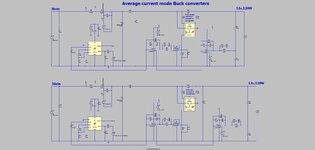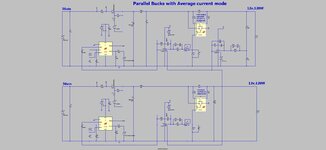with2ls
Junior Member level 3
A standard dual loop average current mode buck converter uses the following control loop to regulate the output voltage:

My question is:
What if the buck converter's output current (measured post output capacitor) is used as the current loop input instead of the inductor current IL?
Obviously this is not how it is normally done, but the average inductor current is considered output current (total inductor current minus the high frequencies removed by the output capacitor), so I would assume this is acceptable.
I ask because I am using some old hardware, and I'm trying to get a feel for if a hardware change is required.
My question is:
What if the buck converter's output current (measured post output capacitor) is used as the current loop input instead of the inductor current IL?
Obviously this is not how it is normally done, but the average inductor current is considered output current (total inductor current minus the high frequencies removed by the output capacitor), so I would assume this is acceptable.
I ask because I am using some old hardware, and I'm trying to get a feel for if a hardware change is required.

